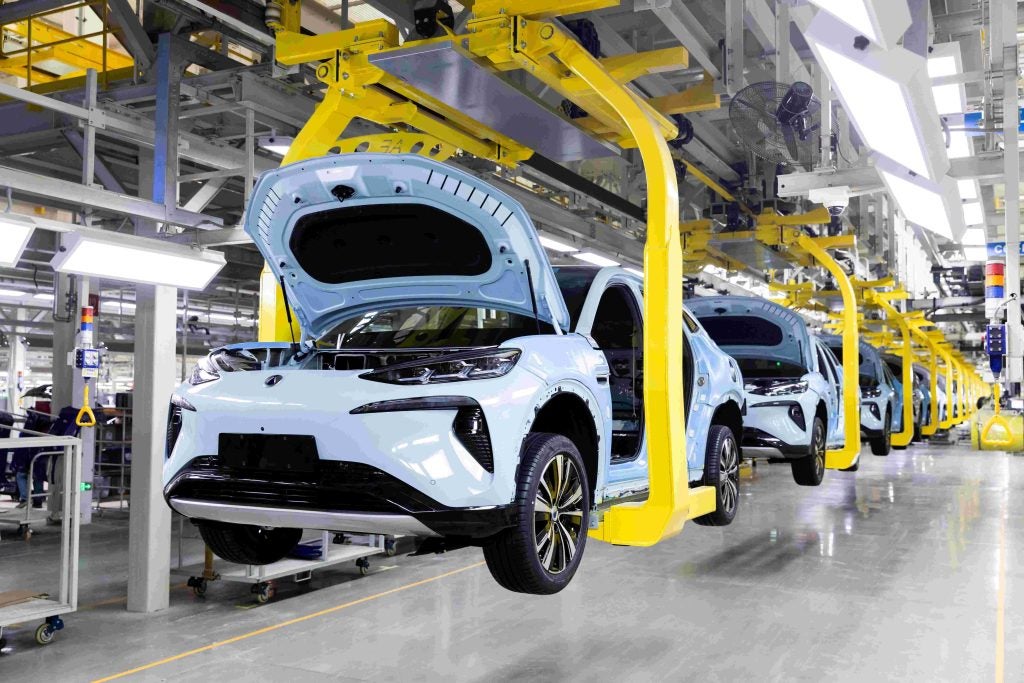In this month’s three-part management briefing, Mark Bursa takes a close look at the development and changing structure of China’s automotive industry. Part 3 examines the rise of the ‘independent’ OEMs, their growing pains and export strategies.
The ‘independents’ – growing pains and export plans
In recent years, the leading Chinese independents have often announced ambitious plans and targets – both in terms of domestic sales and exports. But in reality they have struggled to reach these goals – indeed, it seems that a lot of these announcements are little more than bravado – being seen to be doing something, thus increasing local prestige and political influence.
One example is BYD, the automaker owned by a leading Chinese battery producer, and which is at the forefront of electric car development in the country. BYD has stated over the years that it wants to become the number one Chinese car maker, but in 2010 it fell well short of its sales targets and has been forced to cut 100 dealers as a result.
In 2010 BYD targeted deliveries of 800,000 vehicles but sold only 520,000 cars, even after it adjusted its target down to 600,000 units. The problems stemmed from an over-reliance on government incentives for purchasing small cars, which ended recently. Chinese car makers have lost ground against foreign competition, despite the fact that most of their models are cheaper than equivalent foreign-brand vehicles – but the biggest take-up of incentives was among first-time or low-end car buyers.
Now BYD is estimating that 2011 will see only a minor 10% growth to 550,000 cars, in line with market expectations. Sales continued to slide in January and February 2010, but from March BYD has introduced across-the-board price cuts of up to 19%, aimed at rebuilding sales.
How well do you really know your competitors?
Access the most comprehensive Company Profiles on the market, powered by GlobalData. Save hours of research. Gain competitive edge.

Thank you!
Your download email will arrive shortly
Not ready to buy yet? Download a free sample
We are confident about the unique quality of our Company Profiles. However, we want you to make the most beneficial decision for your business, so we offer a free sample that you can download by submitting the below form
By GlobalDataBYD has also announced its first partnership with a foreign automaker – Daimler Corporation. This will seek to develop a new EV for the Chinese market, to go on sale in 2013 under a completely separate brand.
Other Chinese independents will have been watching BYD’s problems, but it does not seem to have deterred their ambitions plans. Chery, the highest-profile of the independents in recent years, announced in 2010 it would invest around US$3bn to expand its production capacity via a vast new plant to be based at Ordos, in the Inner Mongolia Autonomous Region of North China. This is in addition to already-planned initiatives of a new 200,000-unit plant at Dalian and another at Wuhu, at a further cost of around US$1.5bn.
Earlier Chery announced plans to invest US$35 million to build a research & development centre as it increases the introduction of new models. Chery has announced it aims to sell 800,000 vehicles this year, up 17.3% year-on-year, but a slower rate than in 2010, when sales grew 36.3% against 2009.
Chery’s confidence stems from a continued focus on exports – in recent years the company has grown exports to other developing markets, with its vehicles now available in more than 80 countries in Eastern Europe, Latin America, South-East Asia and the Middle East. In 2010, exports surged 93.2% to 92,000 units, and this puts Chery in a better place than BYD to balance any domestic demand fall with increased exports.
Significantly, Chery has started to cast its net wider than just other emerging nations, and has now started selling into sophisticated markets such as Australia, where Chery Motors 45 dealers selling the Chery J1 hatchback and the Chery J11 compact SUV. A third car, the J3 sedan, will be launched this year, and electronic stability (ESP) will be added to all models, to allow them to be sold in all Australian states. ESP becomes mandatory on all new vehicles sold in all Australian states from November 2011.
Chery has also been selling its Tiggo SUV in Brazil, and sold around 10,000 vehicles in Brazil in 2010. Chery has said it would consider starting local production in the country within three years. And Chery has said it would launch in the US by the end of 2011, starting with electric vehicles. “If everything goes smoothly, the trial operation of Chery’s S18 electric cars will start in the United States by the end of 2011,” Yuan Tao, general manager of Chery’s new energy vehicle branch, told local media.
Of course, Chery has previously announced plans to launch in the US via US entrepreneur Malcolm Bricklin, and the collapse of this scheme was at the root of a serious reassessment of many Chinese automakers’ plans. It didn’t help that Chinese cars performed woefully in crash testing – Chinese standards are much lower, and Chinese automakers clearly underestimated the importance of these results.
Electric vehicles now appear to give the Chinese a likely way into Western markets, as EVs carry premium pricing, without necessarily being tied into luxury brands or high-level build quality. Launching as budget brands, following the model established by the Japanese in the 1970s and the Koreans in the 1990s, will be much harder to achieve nowadays.
EV specialist BYD is pressing ahead with plans to launch in the US, and later, Western Europe. It has been a regular exhibitor at major motor shows, including the 2011 Detroit Show. The BYD E6 electric car, which is scheduled to go on sale in the US in 2012, will carry a price tag of $35,000. BYD claims a range of 320km, via a self-developed 60KwH lithium-ion battery pack which can be recharged in six hours. BYD also claims a fast-charge to 50% in 10 minutes.
It will be sold alongside the smaller F3DM plug-in hybrid sedan at $28,800. This is a plug-in hybrid compact sedan with an estimated all-electric range of 64-100 km, and an additional 480 km when using the on-board gasoline engine. The production model dual mode system runs the vehicle on electric mode at start-up and under short-range conditions.
Geely takes the acquisition route
The other high-profile independent is Geely, which has taken a different route to establishing global credibility. The acquisition of Volvo Car Corporation from Ford has given it a major foothold in the West, and has removed the pressure to develop in-house Geely designs for export.
Volvo is being run as a separate business, and Geely plans to grow the brand in China through a new 300,000-unit plant. The Chinese automaker paid US$1.8bn for the Swedish brand. Former Volkswagen Group of America Chief Executive Stefan Jacoby was appointed president and CEO in 2010, with a brief of keeping the brands separate.
“It has been very clearly stated that Volvo will stay Volvo and Geely will stay Geely,” said a Volvo spokesman. A ‘Volvo-Geely Dialogue and Cooperation Committee’ has been established to steer the future communication and joint efforts of both companies, and Chinese designers will be hired to help tailor Volvo models for Chinese tastes.
Meanwhile Geely Automobile Holdings has stated its plans to achieve annual consolidated sales of 2m cars by 2015, growth of 150% on 2010. In 2010, Geely saw sales jump 27% to 415,000 units, ahead of its target of 400,000. This is without Volvo – including the Swedish brand takes sales to 800,000 units.
Geely said it would build more than 40 models on 15 platforms, and develop new local-market brands, Emgrand, Gleagle and Englon, as well as continue export efforts of Geely cars to emerging markets.
Conclusions
Chinese market growth is continuing, but there does seem to be a growing realisation that it has to be managed. The withdrawal of incentives has dampened the markets, but air quality and congestion issues in major Chinese cities are a bigger problem, and other cities are likely to follow Beijing’s lead in curbing sales. However, the need to replace older cars with cleaner new ones is likely to be encouraged – so rather than restricting sales per se, it’s likely that license plates will be the determining factor.
And any big-city restrictions will be also counterbalanced by demand in smaller cities, where car ownership is lower and where the automakers have yet to focus their attentions. These less affluent regions will demand smaller, low-cost cars – hence the proliferation of China-market brands.
And rather than give up these new markets to the independents, the major state-owned automakers, and their JV partners, are busily creating new brands and models to serve this new part of the market.
The result will be brand proliferation, and fierce competition – with many brands forced to cut prices. This in turn might weed out some of the weaker players, or encourage consolidation – no bad thing in a market with many small automakers. But the original Chinese plan of creating three giant automakers, able to operate on a global scale, has now all but been abandoned. China may consolidate down from the 100-plus car firms at present, but it’s likely there will be around 15-20 Chinese automakers of stature going forward.
The intense focus on the Chinese market means exports to the West are still a relatively low priority. Simply launching Chinese brands as budget nameplates in the West is not likely to work in the second decade of the 21st century, and any ideas the Chinese may have of taking the route the Japanese and Korean have taken just is not feasible.
Electric vehicles do offer an opportunity to enter markets with more profitable vehicles, and at least the Chinese are entering at a time when the major global OEMs are themselves only launching their first-generation EVs.
The other global growth option is acquisition – as Geely (with Volvo) and SAIC (MG Rover) have done. But opportunities are limited here, as very few brands are likely to be offered or available in the future.
So don’t expect to see vast numbers of China-brand cars being marketed in Europe or the US in the immediate future. The Chinese auto industry has plenty of available domestic growth to go for –and that will become more competitive and fragmented, requiring more sophisticated and targeted marketing, matching brands and cars to consumer needs and means.
Mid-term exports are likely to focus on other emerging markets – East Europe, Latin America, Middle East – while other longer-term plays, notably Africa, are likely to become Chinese strongholds as Western OEMs have little interest in such high-risk, low-yield regions.
| China Light Vehicle Production | |||
|---|---|---|---|
| OEM Group | 2009 | 2010 | % change |
| Beiqi Foton | 539777 | 582180 | 8% |
| BMW Group | 44004 | 55582 | 26% |
| Brilliance Jinbei | 314189 | 456850 | 45% |
| Chang’an Automobile Group | 1126240 | 1380304 | 23% |
| Chery Group | 508567 | 691924 | 36% |
| Chrysler Group | 1305 | 1131 | -13% |
| Daimler Group | 14634 | 50272 | 244% |
| Dongfeng Motor | 449777 | 670201 | 49% |
| Fiat Group | 27458 | 36808 | 34% |
| Ford Group | 266496 | 353345 | 33% |
| Geely Group | 345399 | 433780 | 26% |
| General Motors Group | 771467 | 1110691 | 44% |
| Honda Group | 602455 | 676813 | 12% |
| Hyundai Group | 815302 | 1042803 | 28% |
| Isuzu Motors | 39913 | 47150 | 18% |
| Jianghuai Automotive | 283122 | 407068 | 44% |
| Mazda Motors | 173889 | 228090 | 31% |
| Mitsubishi Motors | 31616 | 44204 | 40% |
| Proton Group | 20993 | 35015 | 67% |
| PSA Group | 262889 | 376331 | 43% |
| Renault-Nissan Group | 565820 | 757645 | 34% |
| SAIC Group | 1160091 | 1342997 | 16% |
| Suzuki Group | 243656 | 280740 | 15% |
| Toyota Group | 607959 | 773677 | 27% |
| FAW Group | 488860 | 623343 | 28% |
| Volkswagen Group | 1387328 | 1899629 | 37% |
| Other | 1015535 | 1472619 | 45% |
| Great Wall Motor | 226817 | 398692 | 76% |
| BYD Auto | 422732 | 521232 | 23% |
| Grand Total | 12758290 | 16751116 | 31% |
Source: JD Power Automotive Forecasting
See also:
March management briefing: China’s emerging auto industry (Part 1)
(Part 1 considers the current state of China’s auto industry and the outlook)
March management briefing: China’s emerging auto industry (Part 2)
Part 2 looks at JV strategies as well as new brands for the Chinese market






